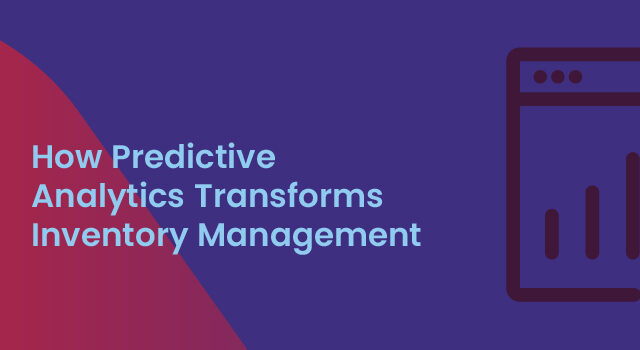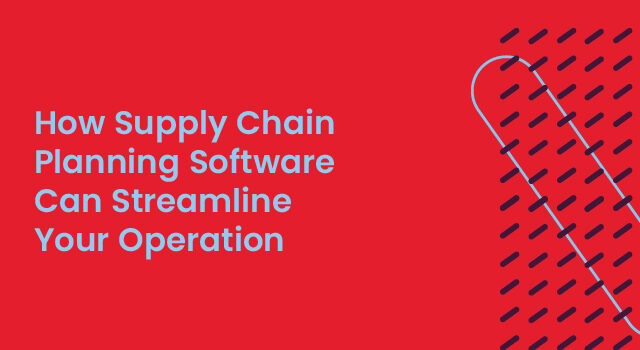While demand planning and supply planning are often used interchangeably, they play distinct roles in business success. Demand planning focuses on forecasting customer needs to guide production and inventory decisions. On the other hand, supply planning ensures that the necessary materials and resources are available to meet this forecasted demand.
Both processes are crucial for driving business success. By understanding how demand and supply planning interact, planners can optimize inventory, reduce costs, enhance cash flow, and improve operational efficiency.
Let’s dive into how demand and supply planning are connected and discover how mastering both can help optimize your business.
Understanding demand planning
Demand planning drives all other business operations, ensuring you have the right products at the right time to reduce costs and maximize customer satisfaction
Definition and objectives
Demand planning is the process of forecasting customer demand. Organizations need accurate forecasts to establish inventory to cover demand without a surplus. They also cannot risk lost sales because of demand shortages. The aim of demand planning is to optimize inventories. With optimized inventories, a business can improve customer service, streamline supply chain management, and increase profitability. Demand planning draws on various data sources to predict future sales. The data includes past sales data, and demand trends.
Key elements of demand planning
Accurate demand forecasting depends on the following key elements:
- Historical data analysis: Inputs include historical sales data and market trends. The aim is to understand past sales patterns.
- Demand forecasting techniques: There are two main categories
- Quantitative models: Relies on historical data and statistical analysis. Models include moving averages and exponential smoothing. Modern systems use artificial intelligence and machine learning for more accurate forecasting.
- Qualitative methods: Market research and sales insights are vital demand forecasting inputs.
Sales and Operations Planning (S&OP) is a vital forecasting input. S&OP systems forecast demand. Then, balance that demand with supply capabilities. The systems encourage cross-functional collaboration. Data is collected from functions like sales, finance, marketing, and operations to create a full view of the demand drivers. Planners use scenario planning capabilities to test assumptions and variables.
Benefits of effective demand planning
Demand planning is a vital business process offering several benefits. Benefits include:
Reduced stock-outs and overstock situations: Ensuring enough stock to cover forecast demand without carrying expensive excess inventories. This results in maximized inventory turnover, improved cash flow and lower holding costs.
Improved customer satisfaction and loyalty: The order fulfilment rate improves as you deliver orders on time. Reduced order delays should translate into fewer processing and delivery errors. Lower inventories mean that your business can quickly respond to changes in customer demand.
Enhanced operational efficiency: Suppliers can plan their production and deliveries more effectively with more accurate forecasts. The result is better supply performance and improved supplier relations. All supply chain participants can plan their resource deployment and use more effectively, leading to reduced waste and greater efficiency. Supply chain coordination and cooperation also improve
Cost reductions: Accurate demand planning reduces supply chain costs. Lower inventories lead to lower inventory holding costs. Expedited shipping costs drop along with rushed orders. Better resource allocation matches production with demand, reducing overtime and labor costs.
Understanding supply planning
Supply planning ensures that resources are effectively allocated to cover forecast requirements. By optimizing supply planning, you can avoid shortages, minimize excess inventory, and maintain a smooth production flow
Definition and objectives
Supply planning is a vital part of supply chain management. It involves translating the forecast into a plan to ensure that the products are available for sale. The supply planning process encompasses production planning, procurement, and material planning.
Supply planning has the following objectives:
- Optimal inventory levels: Ensuring the right amount of inventory to cover the demand forecast.
- Planning production and managing the production schedules: Organizations must plan production to meet forecast sales. The production schedule uses lead times to ensure that production is planned in time to supply the market. It also includes any safety stock requirements.
- Optimizing resource allocation: Plan resources, like labor, machinery, and materials, to cut costs.
Key elements of supply planning
Supply planning involves various critical components, such as:
- Master production schedule: A detailed production plan includes the required mix with quantities.
- Inventory management strategies: Inventory strategies ensure that the right products are available to meet the demand forecast. Inventory strategies include defined safety stocks to support supply and demand variations and optimize stocks. Supplier lead times ensure that orders are placed in time to enable on-time order delivery.
- Raw material and resource planning: Ensuring resource allocation to achieve the forecast. Lead time planning is crucial to ensure that the organization meets planned production schedules.
Benefits of effective supply planning
Effective supply planning brings benefits, including:
- Streamlined operations and reduced lead times: Coordinated and efficient supply chain operations with fewer delays and bottlenecks. Supplier lead times should come down due to improved planning. With shorter lead times, the business can quickly respond to market changes.
- Lowered supply chain costs: Inventory holding costs drop as the excess stocks are removed from the system.
- Improved supplier relationships and production efficiency: Supplier performance management and more accurate forecasts help to improve supplier relationships. Better resource allocation results in enhanced production efficiency.
Key differences between demand planning and supply planning
| Description | Demand Planning | Supply Planning |
| Focus areas |
|
|
| Processes and tools |
|
|
| Outputs |
|
|
| Challenges |
|
|
Interdependence and integration
Demand and supply planning have a symbiotic relationship. Each depends on the other. Demand forecasts provide input for production plans and inform inventory management decisions. These include reorder points and safety stocks, ensuring stock covers customer demand without overstocking.
Businesses plan their procurement activities according to the forecast demand. They order materials and components in line with production schedules. The forecasts enable capacity planning, ensuring resources for the production plan.
Supply planning also provides data for the demand plan. This data includes historic sales, inventory planning information, like actual lead times and supplier delivery performance. Production efficiency and customer feedback helps planners to understand how well the supply plan serviced the demand forecast. Planners use the feedback to fine tune and improve plans.
Integrated Business Planning (IBP) aligns demand and supply with business objectives. The process depends on a single source of data and advanced analytics to create accurate demand and supply plans. These systems include scenario planning, allowing planners to test plan variations. Continuous evaluations and changes keep plans in line with changing market conditions.
IBP helps businesses keep inventory levels down. This results in reduced costs and optimized cash flow. Data-driven decisions enable efficient resource allocation and improved customer satisfaction.
Choosing the right software solutions
Only the right software solutions can help your business stay ahead of the competition in a globally competitive environment. The software you choose must meet your business requirements.
Include all departments in understanding those requirements. Your chosen software should include the following elements:
- Real-time inventory analytics: Real time inventory data enables you to access your current inventory levels at any time. With this information, you can:
- Quickly respond to demand and supply changes.
- Maintain optimal inventory levels.
- Use analytics to automate your replenishment processes.
- Share real-time inventory data with suppliers so everyone benefits.
- Advanced forecasting algorithms: These systems use machine learning techniques to predict future demand. The algorithms improve forecast accuracy, enabling more efficient supply chain operations. More accurate forecasts also enable better resource allocation and enhanced customer satisfaction.
- Integration capabilities with existing systems: A central data system depends on fully integrated software systems. This enables real time data updates where all departments can access and analyze data using the same current information.
The Benefits of choosing the right software solutions
Choosing the right software solutions unlocks a range of benefits, such as
- Enhanced visibility and control over supply chain processes: The software provides a single voice of truth. This enhances interdepartmental communication and collaboration. Employees and suppliers access the same inventory data.
- Improved accuracy in demand forecasting and supply planning: Real-time data and predictive analytics improve forecasting accuracy.
- Streamlined operations leading to cost savings and efficiency gains: The solution should automate routine tasks, saving time. Employees can save time on manual tasks and focus on other areas of the business.
Take the lead with the right technology
Business efficiency and customer satisfaction hinge on effective demand and supply planning. While demand planning predicts customer needs, supply planning ensures those needs are met. By seamlessly aligning these processes with the right software, you can cut costs, boost efficiency, and stay ahead of the competition.




